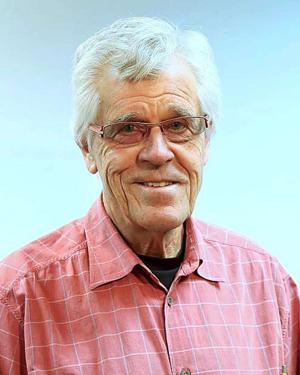The other day I was on KNCO radio with Tom Fitzsimmons interviewing Homer Nottingham and me. Homer who is a locally famous teacher of Tai Chi and Qigong. The show was about “Blue Zones” which are places around the world where people live long and active lives.
.. often to 100.

I happened to mention a story about Roseto, Italy and descendants who moved to America and lived unusually long and happy lives. Tom was interested and I said that I would follow up with an article in The Union. Well.
...
Here it is. Old Roseto One hundred miles southeast of Rome in the Apennine foothills there is a medieval village named Roseto Valfortore. For centuries the residents of Roseto worked in the marble quarries or cultivated the fields for the Saggese family which was the great landowner of the area.
It was a hardscrabble life for the townsfolk who were desperately poor, barely literate and without much hope for economic betterment. In 1882 after hearing that America might offer a better life, ten men and one boy from Roseto set sail for New York. After spending some time in Manhattan’s Little Italy, they wandered ninety miles west and found work in the slate quarries near the town of Bangor, Pennsylvania.
The next year fifteen more Roseto residents left for Bangor. In 1894, twelve hundred Rosetans applied for passports to America leaving their village almost abandoned. New Roseto The Rosetans began buying up land on a rocky hillside next to the town of Bangor.
They built clustered two-story stone houses on narrow streets running up and down the hillside. They built a church, set up spiritual societies, organized festivals. They cleared the land, planted fields and orchards, raised pigs, grew grapes for wine, opened shops and generally created a new town which they called Roseto.
Up until the 1930’s the language of the town was still the old Italian dialect spoken spoken back in Roseto, Valfortore. The Anomaly In the 1950’s Stewart Wolf, a physician at the University of Oklahoma medical school, was invited to give a talk at the local medical society. After the talk Wolf sat down to have a beer with a local doctor who mentioned, “I have been practicing here for several years and rarely find anyone here under the age of sixty-five with heart disease.
” Wolf was surprised because that was the 1950’s (before the advent of cholesterol-lowering drugs) and heart attacks were an epidemic in America. Heart attacks were the leading cause of death in men under sixty-five. Dying of Old Age Wolf enlisted support from the medical society and his students at the University of Oklahoma to study why these Rosetans were so healthy.
They gathered death certificates, took family histories, collected blood samples, did EKG’s and tested virtually the entire town. The results were astonishing. Almost no one under fifty-five had died from a heart attack or showed any signs of heart disease.
The death rate in Roseto was 30 – 35 percent lower than expected. They then went house to house to interview everyone over the age of twenty-one. They were amazed to find that there was no suicide, no alcoholism, no drug addiction, very little crime and no one was on welfare.
The conclusion was “These people were dying of old age. That’s it.” Why Surely it must diet.
But no. The Rosetans were cooking with lard, not the healthier olive oil of the old country. Their pizza was not the old country thin crust with tomatoes and anchovies.
It was American style with bread dough, sausage, eggs and ham. They ate sweet biscotti all year around instead of just at Christmas and Easter in the old country. Over 40 percent of their calories came from fat.
They smoked heavily and many were struggling with obesity...
yet they had almost no heart disease. Surely it must be the environment. But no.
The men in the adjacent town had death rates from heart disease three times greater than in Roseto. Community Dr. Wolf’s team came to realize that it wasn’t diet or exercise or genes or location.
.. it was Roseto itself.
The team saw how Rosetans treated each other, stopped to chat from their porches or in the streets, cooked family-style, had three generations living under one roof and how much respect grandparents commanded. There were twenty-two civic organizations in a town of just under two thousand people. The Rosetans had created a powerful, protective social structure capable of insulating them from the pressures of the modern world.
They were healthy because of the world they created for themselves in their tiny hillside town. Connection Dr. Wolf and his team had to convince the medical community to think about heart attacks in an entirely new way.
It was not enough to just look at the individual, but they had to understand the culture in which people lived – their friends, family and support systems. Until then, no one was thinking that “community created health”. Lesson for Us This story struck my heart.
In our fast-paced, automobile-oriented world with social media, texting instead of talking in person, fake news, political strife, tribalism and the isolation of friends and families, we need to give more attention to ‘community’. Friends and family are an important component of health and fitness. As a society we need more tolerance, acceptance and places to gather, relax, play and ‘connect’.
We all need to help each other in what modest ways we can. P.S.
I want to thank Malcolm Gladwell, the author of Outliers, from which I learned the Roseto story. I have used phrases and sections of his book to bring you this article. I encourage you to read the entire book it is both riveting and inspirational.
Phil Carville is a co-owner of the South Yuba Club. He is happy to respond to questions or comments. He can be reached at philc@southyubaclub.
com ..


















